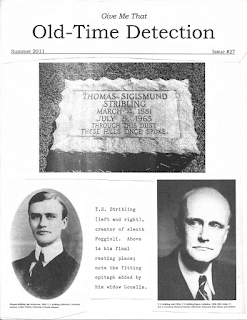When
I thought I'd been misspelling “arsenic” in my newest Milt
Kovak, I thought I'd write an article on how how bad spellers of the
world should untie. But then I found I'd actually been spelling it
correctly and thought, well, hell, there goes that thought.
(Although if it weren't for spell check I'm sure I'd never have
gotten published in the first place.)
Then
I thought about the fact that I'd been spelling “arsenic” at all
– in the new Milt there's arsenic found in the peach melba. (Don't
ask. Buy the book.) A couple of semesters ago I taught a series of
class on writing the mystery and had one class exclusively on
poisons. So I've got the research and you're going to have to deal
with that. (Info dump, anyone?)
First
off, poisons have been around and used about as long as there have
been human beings. One fun fact is that Cleopatra reportedly did a
little experimentation on poisons before selecting the asp as her way
of doing herself in. She did her experiments on her prisoners and
slaves. (Fun lady.) She at first tried henbane and belladonna, but,
despite their rapid action, they appeared to cause too much pain in
her subjects. She ditched the per-curser to strychnine (strychnos
nux-vomica) – also rapid action – because it produced convulsions
that left facial features distorted at death. (And who doesn't want
to be a pretty corpse?) But the asp, her final selection, supposedly
produced a serene and prompt death.
Then,
of course, there were the Borgias who fine-tuned the act of
poisoning, bringing it to the height of its art. In defense came the
establishment of the position of food taster in royal households. If
nothing happened to him after a short period of time, the royal would
go ahead with his meal. Unfortunately, this did little to stop the
serious poisoner.
Formal
study of poisons began in the early nineteen century, with the
isolation of morphine from opium and research into the effects of
curare – a vegetable poison used by South American Indians to
poison their arrows. Matthew J.B. Orfila, considered the founder of
modern toxicology, experimented with and cataloged poisons and their
effects. Arsenic, the poisoner's favorite, was tracked down by James
Marsh around 1836. But Orfila, using Marsh's test on biological
specimens, was an expert witness who helped convict Madame Lefarge.
Remember her?
With
the increase of industry at the beginning of the twentieth century,
new and niftier chemicals became available to the poisoner. Then
came synthetic drugs, which only added to the problems of the
toxicologist. With the increase of barbiturate use after WWII, the
suicide rate increased.
Currently
the trend indicates that medicines for internal use are the favorite
for both suicide and homicide, while external use goodies – such as
cleaning fluids, pesticides, and vegetable alkaloids – run a close
second, with gas and fumes running behind.
Unfortunately
concentration on antidotes has not been as thorough as one would
hope. The old wives tales of using milk (it really only dilutes the
poison), and salt water (which can be dangerous as large amounts of
sodium chloride can bring on fatal heart attacks), are just that –
old wives tales. Basically, get medical attention when poisoning is
suspected.
And
on that happy note, have a nice day.






















